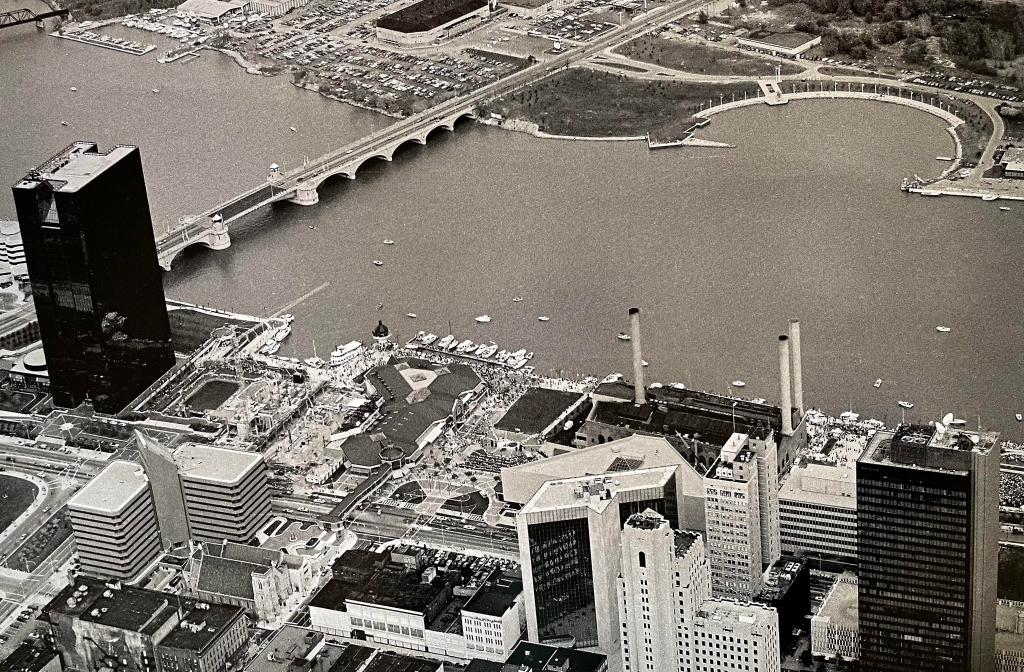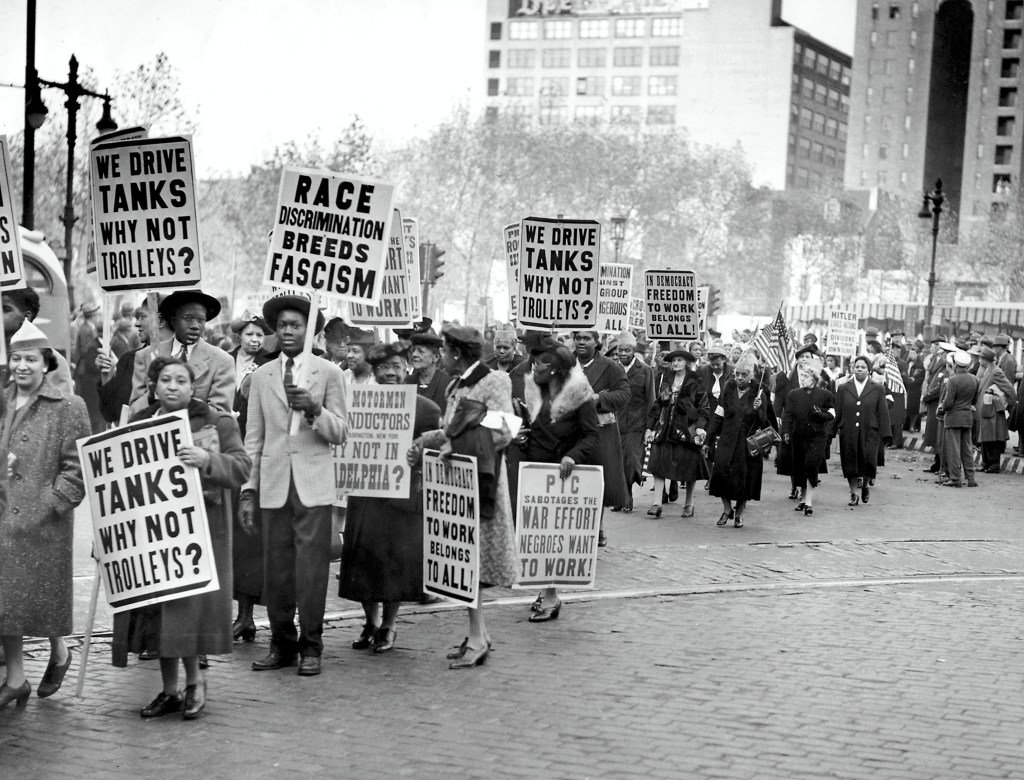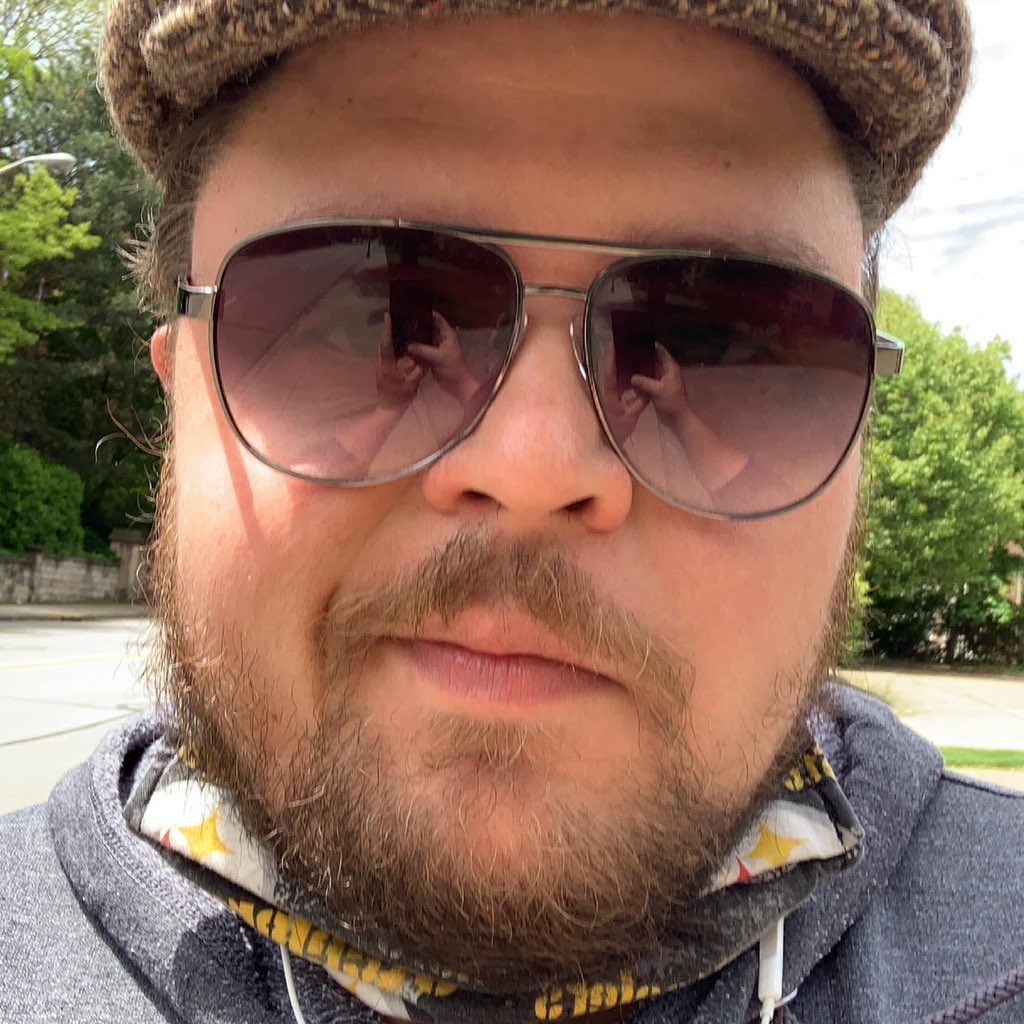by Bradley J. Sommer, Ph.D.
As Republican legislators, both state and local, continue to wage all-out war on Critical Race Theory (real and imagined) and indeed on the very idea of education, looking at the past becomes not only politically dangerous but morally and ethically essential. Disingenuous attacks on the “liberalizing” of curricula have started to politicize what historians previously considered to be statements of pure fact: the cause of the American Civil War, the existence of the Holocaust, the legacy of racism in America. Facts which most of us took for granted as facts are recast as opinions, equal in legitimacy, if not in evidence, to the most extreme conspiracy theories. Many of these now “contested” facts are easily verified upon even cursory inspection of the past. The existence of these facts, while certainly a point of attack on their own, is not at the core of Republican ire, but rather what an analysis of those facts—aka critical thinking—might possibly reveal.
A sleepy Rust Belt city, Toledo, Ohio does not immediately come to mind when we look to frame and understand these modern attacks on education and fact. Much of Toledo’s more well-known history focuses on labor moments like the Auto-Lite Strike of 1934 or the decline of the glass industry in the 1980s. A small city by comparison to other major manufacturing centers, Toledo at its peak in had a population of around 384,000 in 1970 (this number has dipped dramatically to around 275,000 now). A mostly white city, Toledo nonetheless maintained a degree of racial and ethnic diversity throughout the latter half of the twentieth century, with a mix of African Americans, many of them migrants from the South and Northeast, along with Polish, Hungarian, Lebanese, Irish, Syrian, and Greek immigrants. The slow but steady intermixing of communities was a result of shifting neighborhoods. By the 1980s, only the Black community continued to have a generally defined geographic area, although that too was loose.[1]

At its core, Toledo was an industrial city. Industry, irrevocably tied to the city’s identity, framed the way that Toledoans saw themselves and their city, and the way it was perceived by the American public. Owens-Illinois, Owens-Corning, Libbey-Owens-Ford, Willys-Overland, Dana-Spicer, Toledo Scale, Electric Auto-Lite; corporations were synonymous with the city while their products became essential to modern American life.[2] The corporatization of Toledo’s public image in the years after the Second World War came with some baggage. Toledo came into prominence as a union town, due in no small part to its well-known history for radicalism, a reputation earned by major strike incidents such as the Willys-Overland Strike of 1919 and Auto-Lite in 1934. An active and aware labor force defined Toledo well into the 1960s. Workers struck with increasing frequency, but perhaps less vigor, during the Second World War and the early stages of the Cold War.
This isn’t to say that all was harmonious in the Glass City during this postwar period. Far from it. Various voices within the city combated these fanciful notions, whether it was the growing discontent of African Americans over access to jobs and federal housing for defense workers, the rising militancy of workers and the corresponding resistance to racial equality, or the increasing cleavages of the city’s working-class between the AFL and the CIO, Toledo’s working classes actively toed the line between cooperation and disengagement. Black workers, major contributors to the war effort, faced constant resistance. Every time they tried to enter into better-paying union jobs, they encountered new resistance, relegated to jobs that were frequently dangerous, low-paying, or part-time. Sometimes it was all three.[3]

Toledo’s public campaign for labor peace inspired others across the country to push for the same goal. The failure of this idea and the simultaneous failure of Toledo’s reform class to create substantive change left the city in a perilous position, struggling to find itself. Identity is tied to image and image is a commodity. Like any commodity, image can be bought and sold on the market and was highly mercurial. In the 1970s, Toledo was both buyer and seller, still making goods for the upwardly mobile middle-class family but also desperately looking for something new to hang its hat on. Years of decline within the city’s union leadership and the increasingly anti-worker policies of major employers left the decades-long façade of labor peace shattered. The means by which this was achieved fostered an animosity which ran both cold and hot, representing one of the critical themes of Toledo’s twentieth-century story: in whose image would the city be (re)made?
Toledo was never an anti-racist utopia, no land of hope. Neither was it a national hotbed for racial tensions. Like much of the industrial Midwest, Toledo’s race relations simmered in a constant state of uneasiness. Redlines were more common than fistfights. However, when a city is experiencing social and economic insecurity, it often reveals its underlying racists structures. Reactionary forces looking for someone to blame began to thrust themselves into the public conversation. Many of these forces looked to blame those actually responsible. Others, though, used it as a moment to mask pre-existing animosity with concern over the future. Toledoans were left to support themselves in their communities, where they watched and waited.
No group exemplifies this more than the American White Nationalist Party and its brief but notable entry into Toledo’s politics. Founded by Toledoan Russel R. Veh in 1970, originally as the Ohio White National Party but renamed shortly thereafter, AWNP was headquartered in Toledo.[4] With a slogan of “Free Men Are Not Equal, Equal Men Are Not Free,” the party’s ideology was an amalgam of Klanism, Lost Cause rhetoric, Neo Nazism, and militant authoritarianism.[5] Spearheaded by Veh—who ran a write-in campaign in the 1971 city council elections—AWNP ran a ticket of open anti-Semitism, lower taxes, “more and better trained police,” asking whether Toledoans had “had enough” of “integration, cop killers, underworld paid politicians, special rights to ‘minority’ groups, and Negro crime.”[6]

Integration, “Negro crime,” bussing, “more and better trained police” all spoke openly and clearly to an anti-Black racism. As African American communities were being demolishing or scheduled for demolition for Urban Renewal, displaced residents were being forced into other communities. Pressing Black and white residents closer together and into schools and other socio-cultural institutions stoked fears among white workers, a fear Veh and the AWNP looked to exploit. An undated campaign flyer pushed a language of violence. Sarcastically lamenting the “poor,” underprivileged Black man,” it sharply criticized the Nixon White House and labor unions for opening the door to more Black workers. In a tone more threat than wishful thinking or conjecture, the campaign asserted that “As White workers get fed up with Black attempts to take their jobs away, more than one arrogant Black is likely to ‘fall’ off a scaffold or get caught in some machinery or have something heavy dropped on his thick skull” a sentiment the AWNP clearly looked for, opening that it was not “such a bad idea.” These thinly veiled calls to and threats of violence represented a fringe sentiment within the city’s white working-class to be sure. However, the underlying frustrations and racism were by no means unique. [7]
Veh’s campaign was unsuccessful. Having failed to file his campaign, and the late start to it once he tried to get write-in votes, gave him little chance. It is unclear if these organizational and personal failings of Veh—a high school dropout and, by all accounts, failure in most aspects of his personal and professional life—were the sole reason for his failed campaign. Was there a place for an openly white nationalist party in Toledo? Did the message resonate, with its only shortcoming being the lack of structure and planning? The answer is unclear but appears to be no. Veh made several attempts to spread his message including passing out literature on corners and even giving a speech to 400 students at nearby Bowling Green State University. By 1974, though, Veh and his party were gone. Moving to San Francisco and adopting his party into the existing National Socialist League. A 1990 article by the Blade revealed a man obsessed with conspiracy theories, specifically Holocaust denial, demonstrating all of the hallmarks of the emerging right-wing terrorism that defined the 90s.[8]

While Veh and the AWNP fell into obscurity, their message, beliefs, and rhetoric have caught new life in Toledo and Northwest Ohio in the decades since. A series of protests by the KKK and the National Socialist Movement (NSM) in the 2000s and 2010s reminds us that white nationalism never went away in the area.[9] Violent protests in 2005 and again in 2015 shocked Toledoans, many of whom were unaware that such organizations existed in their city.[10] While the physical violence presented by white nationalism represents a very clear and present danger to American society, the political violence of the moment—racially-motivated gerrymandering, voting restrictions, attacks on education and curriculum—is much greater. White nationalism was often placed at the periphery of national politics but in recent years has become the core of modern social and political conservatism. It is unclear whether there is a straight line connecting the AWNP and NSM, but we do know that the uptick in white nationalism, indeed in fascism (let’s call it what it is), is both a product of this specific moment and a legacy of the past. It’s a tradition, carried from parent to child.
The continued existence of white nationalist groups came as a shock to many Toledoans. It has likely shocked a lot of Americans in recent years, many of whom thought that Nazis existed only in textbooks and as the bad guys in movies. Our collective naivete about our history of racism and white nationalism demonstrates two key points. First, it shows that attempts to obscure the past can have tangible effects on the present (how different might our reactions have been to Trump and the new alt-right in 2015 if more of us had been aware). It is considerably harder to take people by surprise when they can hear you coming. Second, it explains the importance of historical literacy and the role it plays in contemporary society and politics. Republicans and the alt-right are speaking a very particular language right now. History (and history) are how we can understand that language and respond to it.

Bradley J. Sommer, Ph.D. is a historian specializing in labor, class, industrialization and deindustrialization, and African American history. He received his Ph.D. from Carnegie Mellon University, his M.A. from the University of Cincinnati, and his B.A. from the University of Toledo. His dissertation, “Tomorrow Never Came: Race, Class, Reform, Conflict, and the Decline of an Industrial City, Toledo, Ohio, 1930-1980” examines the various processes that contributed to both the rise and fall of Toledo’s industrial economy and working classes, while laying a framework for understanding its postindustrial present. Brad is currently doing freelance work as a historian and writer along with finalizing two book manuscripts. One is an expansion of his dissertation—”Tomorrow Never Came: The Making of a Postindustrial City”—and the other is a collection of essays on his life and experiences during his 13 years as both undergrad and grad student called “Professional Student: My Decade(Plus) in College.” Originally from Canton, OH, Brad spends his spare time reading, walking, collecting vinyl records, and watching his beloved Pittsburgh sports teams. He can be reached through his website, bradleyjsommer.com, or on Twitter @DrHistoryBrad.
****Editor’s Note: We wish to clarify the terms used throughout our “Teaching ‘CRT’ in an Age of White Backlash.” Some of our essays engage actual Critical Race Theory, the legal term used by thinkers & jurists like Kimberlé W. Crenshaw and Derrick Bell to explain the racist ways that American laws are enforced and litigated. Our submissions also criticize white conservative attacks on “CRT”—the umbrella term they apply to any teaching critical of white supremacy. The distinction between these terms is important for two reasons. 1) As many have already noted, no one teaches Critical Race Theory in primary or secondary schools (although it would be fine if they did) because it is a legal theory. 2) It is important to explain clearly what white supremacists mean when they use the term “CRT” because it is important that Americans of all ages understand the ways that our racist history and culture contributed to the country we inherit. Thus, although we encourage contributors to use both terms as it relates to their work, we want to be clear that conservatives lie about what Critical Race Theory is both to prevent teaching about our country’s racist past/present and to undermine necessary critiques of our white supremacist legal system.****
Further Reading
[1] https://datacommons.org/place/geoId/3977000?category=Demographics#Population-by-race
[2] “Historical timeline of Fiberglas and Owens-Corning,” Owens-Corning, n.d. Box 28 Folder 18. Owens-Corning, MSS-222. University of Toledo Libraries, Ward M. Canaday Center, Manuscript Collection. Many of the modern suburban homes that exploded across America after the Second World War had Owens-Corning Fiberglas insulation or Vitrolite insulated windows made by Libbey-Owens-Ford.
[3] Merle Abbott. Interview. Conducted by Dr. Willie L. McKether, May 14, 2000. Edrene Cole African American Oral History Collection (“Toledo-Lucas County Public Library, The Edrene Cole African American Oral History Collection”), Local History & Genealogy Department, Toledo-Lucas County Public Library.
[4] In all of its published materials, it notes that the national headquarters is in Toledo but not address is given, just a P.O. Box.
[5] “Lincoln Favored Segregation” pamphlet, n.d. 1971. American White Nationalist Party, Box 1, Folder 21A. Lucas County Politics Collection, Mss, Coll. 40. Local History & Genealogy Department, Toledo-Lucas County Public Library.
[6] Campaign Ad,” ibid.
[7] “Who’s for the WHITE working man?” campaign ad, n.d, ibid.
[8] “Former Toledoan finds niche peddling hate,” April 1, 1990, Toledo Blade.
[9] https://www.toledoblade.com/Police-Fire/2015/04/19/No-violence-at-neo-Nazi-rally.html
[10] https://www.toledoblade.com/local/2017/08/14/Toledo-area-no-stranger-to-KKK-Nazi-rallies/stories/20170813248


we need more work like this
LikeLike